Like it or not, electrification of our cars is here to stay, and hybrid cars are leading the charge.
Hybrids are often considered the stepping stone between cars with conventional internal combustion engines (referred to as ICE) and pure electric vehicles (EV). Hybrids essentially combine the two.
But there are now several different types of hybrids, so to help you understand the options and the pros and cons of each, we’ve looked at some of the reasons you might consider a hybrid and explain how the different types of hybrids work.
RELATED:
Best hybrid SUVs »
What are the benefits of a hybrid car versus a normal petrol or diesel car?
Reduced running costs:
Hybrids consume less fuel than regular cars, since the electric motor drives the wheels for part of the time, especially from standstill or at lower speeds, and helps for the rest of the journey. When the engine fires up, it doesn’t have to work as hard either, as the car is already in motion, further improving fuel economy.
Lower tailpipe emissions:
In EV-only mode, there are no harmful emissions from the exhaust pipes, making hybrids especially suitable in densely populated areas.
Quieter, smoother operation:
Electric motors are almost completely noiseless and thus quieter than an engine, as well as smoother in operation, improving comfort.
Stronger performance:
The addition of an electric motor provides a useful extra amount of power and torque, for stronger acceleration and throttle response.
Higher resale values:
Hybrid sales soared by 75 per cent year-on-year in 2024. It seems to be the powertrain of choice. Compare the resale value of a 2021 to 2024 Toyota Camry petrol versus hybrid, and the facts are irrefutable. The hybrid is worth up to 30 per cent more, model for model – which is more than twice the difference between the two powertrains when new. Great news for hybrid owners.
What are the advantages of a hybrid car versus a full electric car?
Cheaper to buy:
Using the Hyundai Kona as an example, the Kona Hybrid from $36,500 (before on-road costs) is only two-thirds of the price of its electric-only equivalent, the Kona Electric Standard, which kicks off from $54,000.
No range anxiety:
With hybrids able to use their internal combustion engines to keep the batteries topped up, drivers don’t need to worry about where their next charge is coming from.
No waiting for the battery pack to recharge:
EVs need time to fully recharge. Even a modest battery size of 50kWh as found in the base MG4 would require more than 60 minutes using a common 50kW DC charge station, or over 24 hours if plugged in at home. These figures more than double if you double the battery size to 100kWh, as found in many premium SUVs.
No need to park to charge up:
Hybrids don’t need to be parked and plugged in to recharge, instead the on-board engine generates most of the electricity it needs.
What are the different types of hybrid cars?
All hybrid cars use a clever combination of an internal combustion engine (usually petrol) and one or more electric motors to drive the wheels. The most common type of hybrid is the non-plug-in hybrid vehicle like a Toyota RAV4 Hybrid.
The next most common is the plug-in hybrid (PHEV), which has a larger battery (though still a fraction of the size of an EV battery) that can be recharged using electricity from an external source like a household socket, or by the internal combustion engine when the vehicle is on the move.
Both have an engine paired with an electric motor, battery pack and generator, to send drive separately or concurrently to the wheels.
Then there is the mild hybrid, which, as the name suggests utilises only a small amount of electric assistance – mostly from a larger alternator/generator and/or 48-volt battery in place of a regular 12V battery. While mild hybrid vehicles have their internal combustion engine running all the time while driving, they do derive some fuel economy benefits from electric assistance. Affordable and comparatively simple, the Suzuki Swift Hybrid is a very impressive example of a cost-effective mild hybrid.
There are also range extender hybrids, which are still rare in Australia, but are gaining in popularity of late. We’ve explained these below.
1. Hybrid Electric Vehicle (HEV)
The first things to note about HEVs is that they are self-charging, as opposed to plug-in hybrids (PHEVs) that you 'plug in' to charge.
In a series-parallel HEV, the battery pack is relatively small. It provides enough charge to get the car moving to speeds and distances of around 40km/h and 2km (or slightly more, depending on battery size) respectively, before the engine fires up to assist with directly driving the wheels.
The HEV’s battery pack is charged by the engine when driving, either when idling or on the move, and/or via kinetic energy gathered from the action of braking. This is known as regenerative braking. No external charging of the battery pack is possible, so don’t bother about looking for a wall plug or charging station. Note that Toyota promotes its hybrids as ‘self-charging’, which is technically true, but sidesteps the fact that a fossil fuel is still required for it to happen.
The PHEV, meanwhile, has a much larger battery pack. During the mid-2010s, popular examples like the original Mitsubishi Outlander PHEV offered a stated pure EV range of about 50km or so, before the engine takes over. However, as batteries became larger and more efficient during this decade, typical PHEV range has nearly doubled, to around 100km. And sometimes more.
While a PHEV’s battery pack can be charged by an ICE as per a HEV’s, plugging into mains power is necessary due to its extra size and capacity. That’s the price you pay for having useable everyday pure-electric range.
Some older HEVs, like Honda’s defunct Insight, Civic Hybrid and CR-Z from the 2010s, used a ‘parallel-only’ hybrid set-up, where the electric motor assisted the petrol engine but never drove the wheels directly. More modern Hondas, including the compact HR-V e:HEV launched back in 2022, employ a ‘series-parallel’ arrangement similar to Toyota’s.
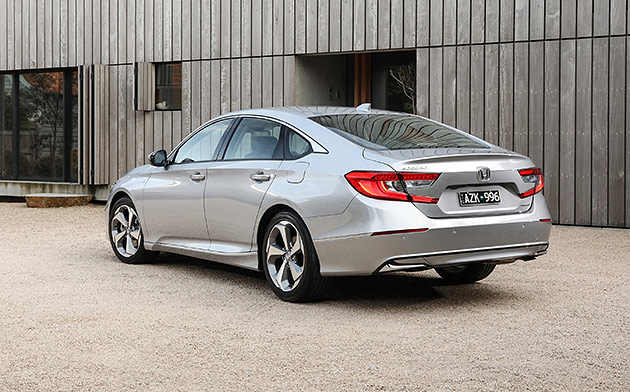
The benefits of HEVs:
HEVs are the cheapest entry into hybrid electrification, with prices for the MG3 Hybrid and Toyota Yaris HEV hatchbacks starting from under $30,000. Popular names in the small SUV hybrid field include the Haval Jolion, Toyota Yaris Cross, Hyundai Kona HEV and HR-V e:HEV, and they kick off from under $40,000.
The available performance comes on strongly because electric motors produce their maximum torque from zero revs, boosting acceleration and providing immediate throttle responses. This in turn means a smaller-capacity and lighter petrol engine is sufficient, further improving efficiency.
HEVs produce fewer carbon and nitrogen oxide emissions than petrol or diesel cars, resulting in dramatically more economical and cleaner vehicles – especially in city areas where heavy traffic means the electric motor is more likely to be the main propulsion system driving the wheels.
All HEVs feature a stop-start function that cuts the engine when coasting at lower speeds and when braking. This further saves fuel, lowers emissions and cuts noise pollution. Sitting in heavy traffic is (slightly) more bearable with no idling engine droning away.
The very nature of the HEV – an electric motor and engine combo – means the battery pack never needs to be plugged into an external power source for recharging. The engine diverts power to a generator to charge it instead, or electricity is converted from otherwise wasted kinetic energy using regenerative braking technology. If you live in an apartment or have no access to off-street parking, you never need to worry about finding a long-enough power cord.
Result? No range anxiety or wasting time and energy finding a place to plug the car in, the HEV is great for city driving and short distance commutes.
The disadvantages of HEVs:
While there are cheap HEVs, they are generally more expensive than their equivalently-sized and equipped petrol-engined counterparts because of the added cost and complexity of electrification, from the battery pack and electric motor to the unique transmission and electrical cabling. A base Kona petrol starts at $32,500 is $4500 cheaper than the hybrid equivalent.
HEVs are at their best in terms of driving performance and efficiency around town, because they can take advantage of the low-speed torque of the electric motor in stop-start traffic. Out on the open road at speed, they generally lose their economy advantages over petrol-only cars as petrol engines become more economical at cruising speeds but still have to carry the weight of the battery and electric motor. Basically, highway-only driving doesn’t properly leverage an HEV’s potential, and what you’re left with is a car with two propulsion units instead of one to lug around.
Batteries are heavy and usually located in the lower rear half of a vehicle, at the cost of some luggage capacity and cargo versatility. This can also lead to a higher floor, meaning heavier items require extra excursion.
Where’s the spare wheel? If you are fortunate enough to have a hybrid with a temporary spare tyre instead of a full-sized spare, count yourself lucky, because most hybrids only have a tyre-inflator kit. Given that SUVs are meant to evoke outdoor adventure, increasing their likelihood of a puncture out on the open road, this is unacceptable, particularly on Australia’s demanding roads.
Having two propulsion systems in the one car adds cost and complexity to servicing and repairs, though most have proven reliable and durable as electric motors comprise fewer moving parts and fluids than a petrol engine.
Although battery packs are usually guaranteed for eight years, over time their ability to hold charge does decline. In hybrids, this means the petrol engine will run slightly more often than when the car was new. However, even with the battery beyond its best, the hybrid system will still have benefits over a petrol-only vehicle. Unless there is a major fault with the battery in its first three years, usually it becomes uneconomic to replace the battery in an aging hybrid.
HEVs: The players
You cannot talk HEVs without starting with Toyota, because Toyota made hybrids accessible and increasingly affordable.
The Prius lasted over 20 years, and during the early 2010s, Toyota’s HEV rollout also included the only hybrid vehicle ever built in Australia – the Camry Hybrid. The latter switched to full importation when full-line Australian vehicle manufacturing ceased in 2017, but other, long-established nameplates like Corolla and RAV4 also added HEV grades.
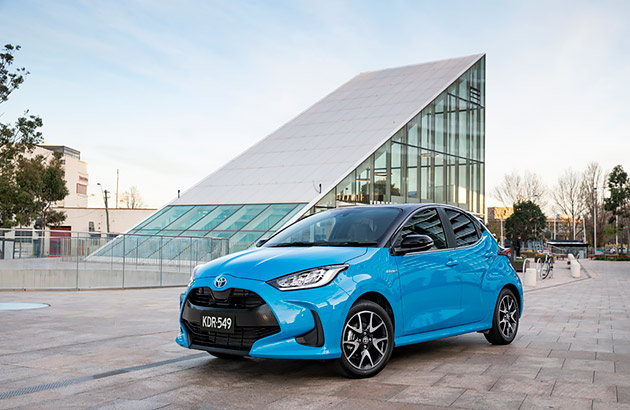
During the 2020s, most of Toyota’s passenger cars switched wholesale to hybrid-only, from Yaris to C-HR to Kluger. And, while only mild-hybrid versions of the Prado SUV and HiLux ute currently exist, these too are expected to go HEV as the next decade approaches.
The same also applies to Toyota’s Lexus luxury brand, while Honda’s (admittedly slimmer) vehicle range is now largely hybrid.
Nowadays, it is more common for a carmaker to offer some form of hybrid, even ones that populate the bottom end of the market. Chinese models like the MG ZS and Haval H6 are sub-$50,000 examples, while Kia, Hyundai, Nissan, Subaru and even Jeep are really stepping up with options in the $50,000 to $80,000 classes. And more are added with each year.
Plug-in hybrid electric vehicle (PHEV)
As the name suggests, a PHEV is a hybrid but with a socket like an EV, so it can be charged from an external source, such as from a home, office or charging station. In normal driving, some electricity is fed back into the battery pack from the engine and regenerative braking systems within the car, however the plug-in capability provides the option to charge the PHEV’s battery (which is usually larger than a regular hybrid’s battery) from an external power source, allowing for longer electric-only range.
Some PHEVs can be made to use their petrol engine to fully charge the battery while being driven, however this is not a very efficient way to charge the battery.
With an externally chargeable battery, a PHEV is much closer to the ownership and driving experience of an EV.
Compared to its hybrid sibling, the Kia Sorento PHEV’s battery is more than nine times the capacity. Think of the battery-pack as a fuel tank for electricity, so the bigger it is, the further you can travel. In plug-in hybrids, in EV mode the use of the electric motor is prioritised until the battery is depleted, after which the car works more like a regular hybrid, with petrol engine and electric motor working together more frequently for propulsion and to keep a minimum charge in the battery.
It’s the solution to range anxiety while still enjoying many of the EV advantages. You’ll just need to charge a PHEV more often than a fully electric car in order to keep running on electricity.
Some PHEVs have a phenomenal combined petrol/EV range, such as the BYD Sealion 6 PHEV’s theoretical 1300km distance between refills. Though to do that, you’ll need to stop regularly to recharge the battery.
As with all EVs, a PHEV comes with its own charging hardware, namely a cable to a three-pin household socket. Additionally, a wall box can be purchased and installed by an outside supplier from around $1600.
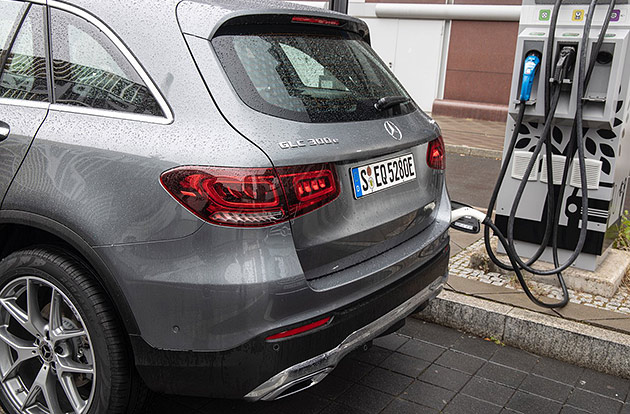
The advantages of a plug-in hybrid:
As with EVs, PHEV owners report that they habitually plug their cars in to charge overnight as they would a mobile phone, except they don’t worry about being left stranded if they occasionally forget to recharge their cars.
US studies have shown that using household electricity to charge a PHEV costs substantially less than the fuel a HEV requires to recharge their (much smaller) battery packs – though PHEVs usually cost a lot more to buy in the first place. Compared to the Lexus RX 350h hybrid, the RX 450h+ PHEV version is some $10,000 more expensive.
A PHEV’s low fuel consumption and emissions ratings would come in handy if Australia switches to a European-style emission-based registration and taxation system, further rewarding EV and PHEV motoring.
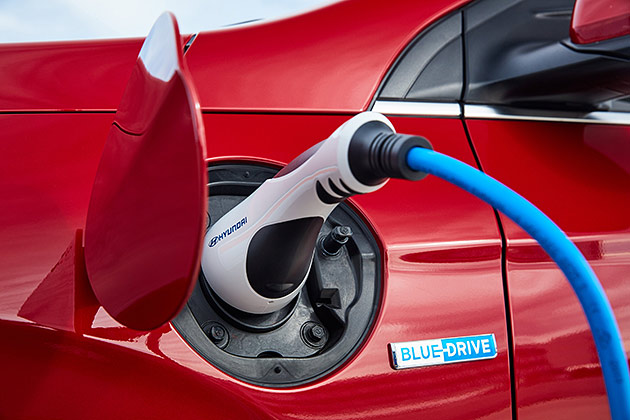
PHEVs allow the driver to control when the electric motor operates, to preserve charge for when it is most beneficial running in EV mode, such as in built-up areas or during traffic jams.
Not just around town. EV charging infrastructure is growing rapidly across Australia, meaning PHEV owners are increasingly able to use their vehicles without the ICE security blanket if they so desire.
In EV mode, PHEVs are as hushed and smooth as EVs, while packing plenty of low-down torque oomph.
Historically, within their own model range, PHEVs have been cheaper than their EV equivalents. An example of this was the Kia Niro.
The disadvantages of a plug-in hybrid:
The added complexity of a larger and heavier battery pack, combined with extra electrical engineering for the plug-in technology, means more to service and repair over the longer term, on top of the engine and motor combination.
Currently, PHEVs cost substantially more than their petrol and HEV counterparts.
As with most HEVs, PHEVs powertrain electrification often results in reduced cargo capacity, though it’s worse in the PHEV because the battery pack is larger again, often necessitating the removal of a spare wheel.
Though a warranty for up to eight years is the norm, if you do choose to replace a PHEV’s battery pack, it’ll be more expensive than an HEV’s smaller equivalent. For example, a Prius battery pack is about $4000 while an PHEV’s can cost upwards of $15,000 (before labour) for some models, so you’ll need to consider whether this sort of expenditure makes good economic sense in an older vehicle.
Using a regular household outlet requires around six to eight hours depending on the PHEV, while obviously a HEV requires no plugging-in hassles.
Owners who forget or don’t bother to plug their cars in and drive their PHEVs purely on petrol will suffer higher fuel consumption compared to regular cars and especially HEVs.
Some PHEV owners that drive only short distances at low speeds may have fuel that sits in their tanks for months, causing it to deteriorate and then possibly eventually damage your vehicle’s ICE.
PHEVs: The players
Mitsubishi’s Outlander PHEV paved the way for mainstream PHEVs when it arrived in 2013. Blending SUV practicality with a 50km EV range helped it become history’s best-selling PHEV.
Today, Chinese brands have really stepped up in this field. The BYD Sealion 6 PHEV has been a big seller, backed up by Australia’s first-ever PHEV ute, the BYD Shark 6, as well as the MG H6 PHEV.
From there up it’s mostly premium SUVs, including the Mazda CX-60 and CX-80, Peugeot 3008, Lexus NX 450h+ and Volvo XC60 Recharge at under $100K, as well as luxury sports sedans and coupes costing at least twice that amount, such as the Chevrolet Corvette E-Ray, BMW M5, Porsche Panamera 4E-Hybrid and even the McLaren Artura supercar.
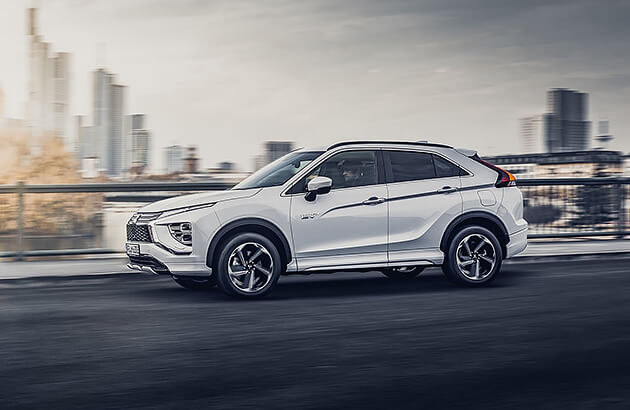
3. Mild hybrids
Mild hybrids commonly have an engine starter motor that can also function as an electricity generator (known as a starter-generator), so after starting the engine, the same unit can also send energy back into the car’s battery, which is usually a 48-volt unit rather than 12 volts.
This removes the need for a conventional alternator and separate starter motor, saving weight, and brings the ability to give the petrol engine a boost under acceleration. Mild hybrids with starter-generators also commonly include engine start/stop technology, which operates far more smoothly than start/stop systems in cars with conventional starter motors.
Recent mild hybrid cars in Australia include the Suzuki Swift, Mazda3, Mercedes-Benz C 200 and Toyota HiLux 48V.
4. Range extender hybrids
Range-extender (or REx) hybrids only have an electric motor driving the wheels, but they carry an on-board small petrol engine that is there solely as an electricity generator to recharge the battery pack.
The Holden Volt (2011-2014) and BMW i3 REx (2014-2019) are defunct examples. Both were well packaged and good to drive but short on range and too expensive, with the latter was also criticised for providing disappointing additional extended petrol range, while being markedly noisy when the extender engine was running.
No range-extender hybrid is currently sold new in Australia, though Mazda introduced a rotary-engined version of its slow-selling MX-30 EV crossover in some overseas markets during 2023.
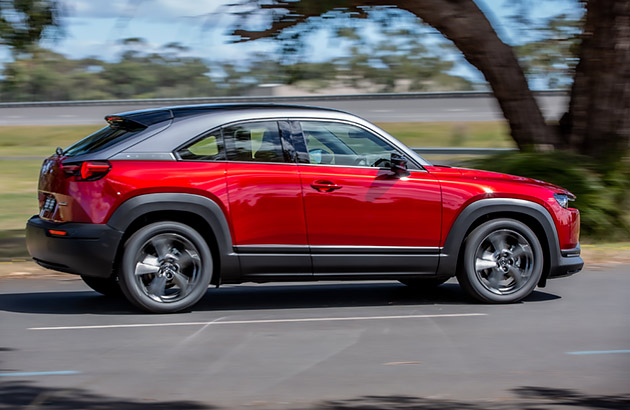
Hybrid cars FAQs
Which is better – a HEV or PHEV?
Hybrid on a budget, PHEV for that all-electric experience but with a petrol engine back-up for extended journeys and no range anxiety.
Are hybrids worth it?
If using considerably less fuel and creating fewer emissions are important to you, then definitely. Hybrids are usually more affordable than full electric cars, and often more responsive to drive than their petrol-only equivalents.
What are some of the disadvantages of a hybrid/plug-in hybrid?
They cost more to buy, and may cost more to service. They sometimes weigh more so might be slightly more expensive to register here in WA due to a car’s mass affecting rego costs, and they often have reduced luggage and/or seating space, and might not have a full-sized spare tyre.
Do plug-in hybrids charge while you drive?
Yes, they ‘self-charge’ in that the petrol engine sends power to charge the battery pack, while energy from braking is captured and stored as electricity. Some PHEVs can also charge the battery all the way up while driving. You can also then choose to run in petrol/electric hybrid mode and save the charged battery for later.
Which plug-in hybrid has the longest range?
The BYD Sealion 6 PHEV midsized SUV has the longest official combined powertrain range in Australia, with up to 1100km.
Can you drive a plug-in hybrid without charging?
Yes, just as you would a normal-engined car, but the extra weight of the electric bits would mean it would use more fuel than a non-PHEV equivalent.
What happens if you don’t charge a plug-in hybrid?
Nothing, it will still drive normally, except you won’t enjoy any pure-electric driving range.
Can hybrid cars run on fuel only?
Yes. HEVs rely on fuel to run as their all-electric range is only about 2km before the petrol engine kicks in. The petrol engine will start running earlier if you’re going up a hill or accelerating hard. Most plug-in models can go from about 50km to 80km, while some of the latest, larger-battery versions can even manage up to 100km, before their engine chimes in to assist.
What happens when a hybrid car runs out of battery power?
Nothing, it’s business as usual, as the engine kicks in to assist with driving the wheels and recharging the battery pack.
Last updated:
